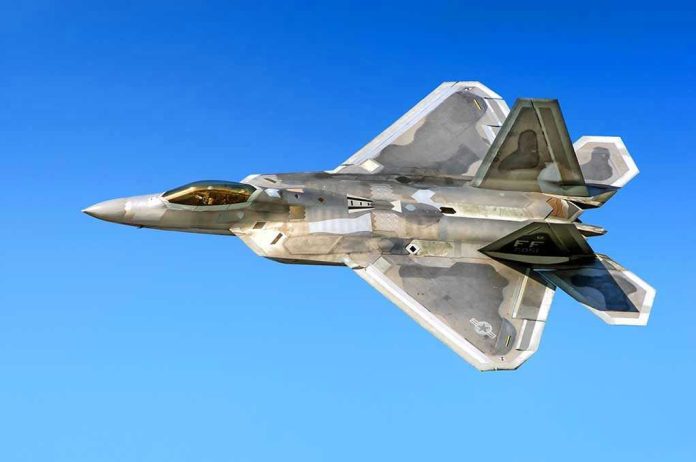
When two Russian warplanes sliced into Lithuanian airspace for just 18 seconds, they didn’t just violate a border—they jolted NATO’s nerves and put the world on edge, leaving everyone to wonder: what’s Vladimir Putin really testing?
Story Snapshot
- Russian Su-30 and Il-78 jets breached Lithuanian airspace from Kaliningrad on October 23, 2025, sparking rapid NATO response.
- The incursion coincided with new U.S. sanctions on Russian oil giants and President Putin’s ominous missile threats.
- Lithuania condemned the breach, summoned Russian diplomats, and received strong support from Baltic allies and NATO.
- Russia denied any violation, exposing a widening information and diplomatic rift with the West.
Russian Warplanes Cross a Red Line—On Purpose?
Two Russian military jets—one a Su-30 fighter, the other an Il-78 tanker—crossed into Lithuanian airspace from the heavily fortified Kaliningrad exclave. NATO radars picked up the violation instantly, and Spanish Eurofighters from the Baltic Air Policing mission roared into the sky. In just 18 seconds, the Russians penetrated about 700 meters into NATO territory, but the breach sent shockwaves far beyond the Baltic. Lithuanian officials condemned the act as a “blatant breach of international law,” and NATO’s readiness was tested in real time.
Two days earlier, Russia had sent MiG-31 jets into Estonian airspace for a full 12 minutes. That episode prompted UN Security Council action and NATO consultations, but this Lithuanian incident unfolded amid even more explosive circumstances. On the very day of the incursion, the U.S. announced sweeping new sanctions on Russian oil titans Rosneft and Lukoil. Within hours, President Putin issued a grim warning: any attack on Russian territory with Western long-range missiles would provoke a “severe response.” The airspace violation didn’t look like an accident—it looked like a message.
Baltic Tensions Near the Breaking Point
Lithuania, Estonia, and Latvia have lived under the shadow of Kaliningrad’s missile batteries and airfields since the Cold War. Russian airspace violations have grown routine since Crimea’s annexation in 2014 and the war in Ukraine. Still, the October 23 incident stood out for its timing. The Lithuanian Foreign Ministry immediately summoned Russian diplomats, while President Gitanas Nausėda and Prime Minister Inga Ruginienė issued forceful statements. Estonia and Latvia pledged solidarity, and NATO’s Combined Air Operations Centre coordinated an intensified air patrol posture. The message to Moscow: the Baltic front is united and on high alert.
Russian officials, predictably, denied everything. The Defense Ministry insisted the flights “were conducted in strict compliance with international regulations and did not violate any borders.” But Lithuanian and NATO radar data told a different story, and the rapid deployment of NATO jets left little doubt that this was a deliberate test of Western resolve. The incident underscored a new reality: in the Baltic, even seconds matter.
Washington’s Sanctions, Putin’s Warning, and the Risk of Miscalculation
While NATO was scrambling jets, Washington was tightening the economic screws. The U.S. hit Russian oil exports—Moscow’s economic lifeblood—with new sanctions, escalating a pressure campaign tied to the ongoing Ukraine war. President Trump publicly endorsed Lithuania’s right to defend its airspace, signaling that even the briefest violation could warrant a forceful response. This raised the stakes for both sides. Putin’s warning about long-range missile attacks, delivered on the same day, wasn’t idle saber-rattling; it was a calculated move in a high-stakes game where military and economic threats now intersect.
Military analysts and regional security experts agree: these airspace violations aren’t just about intimidation. They’re about probing NATO’s response times and cohesion at a moment of diplomatic and military escalation. Each incident raises the risk of miscalculation. A stray missile, a confused pilot, or a delayed diplomatic channel could turn a brief incursion into something far deadlier. The Baltic states, for their part, are pushing for even greater NATO integration, more robust air defenses, and clear rules of engagement—including the right to shoot down intruders if necessary.
Testing the Edge: What Happens Next?
The October 23 violation is already shaping Baltic and NATO defense policy. Lithuania and its neighbors are demanding greater air policing resources, and calls for increased defense spending are gaining traction across Europe. The incident also crystallizes the new nature of information warfare: Lithuanian and NATO officials present radar data and visual confirmation, while Russia sticks to blanket denials. The truth is, both sides are playing to their home audiences and the wider world, working to control the narrative as much as the skies.
The long-term impact could be profound. The pattern of Russian provocations—each one slightly bolder and more calculated—forces NATO to remain in a near-constant state of alert. As military, economic, and information fronts converge, the risk of a catastrophic misstep grows. For now, the Baltic region stands as both a tripwire and a crucible, where the balance of power in Europe is tested every day, sometimes in the space of just 18 seconds.













